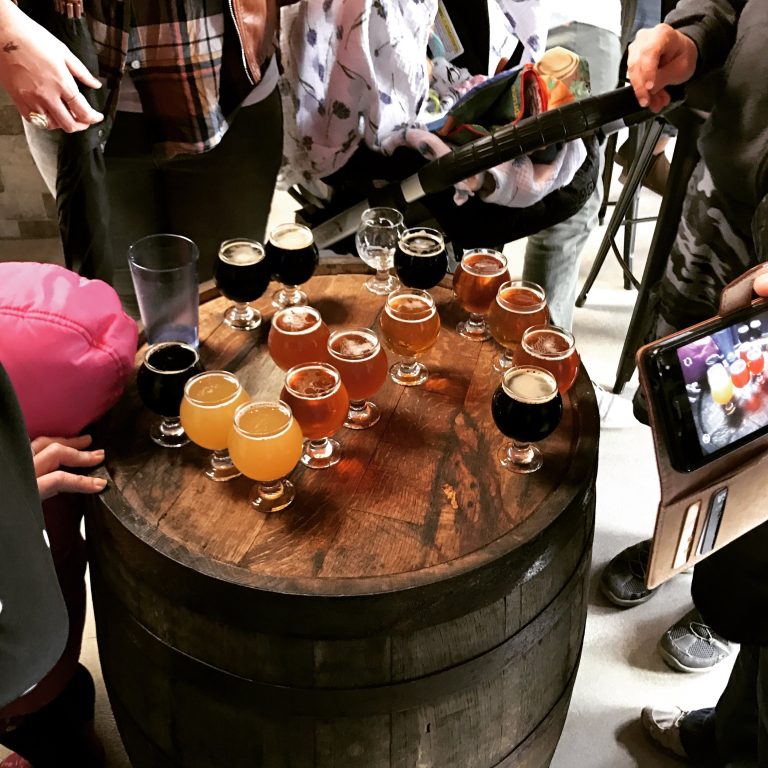What Does SCOBY Do? JuneShine Hard Kombucha, Scripps Ranch
At the end of November 2019, I had the opportunity to do a phone interview with Greg Peters, chief brewing officer at JuneShine. It took me until a few days ago to make it over to their Scripps Ranch tasting room to get some photos. But now that I have those, here’s a little write up. JuneShine isn’t craft beer, but it is definitely relevant to this blog: it is “craft beer adjacent” for sure, and they are doing some things that I hope more craft breweries will try to emulate.
JuneShine Hard Kombucha originally launched in June 2018 in the North Park Brewery Igniter. They took off so quickly that they needed additional brewing capacity and so, after a successful fundraising round, they purchased the equipment and signed a lease at the large Scripps Ranch facility that used to be a Ballast Point brewery and opened a tasting room there in June 2019. Both locations still brew and have extensive tasting room hours.
You wouldn’t recognize the old Ballast Point Scripps Ranch facility now, except for the font on the door announcing the entrance to the tasting room. The inside has been entirely re-modeled, in a soft, modern/Scandinavian style. It is pleasant, light and refreshing compared to many brewery tasting rooms. Interestingly, the same descriptors apply to their hard kombucha.
The Scripps Ranch location offers a limited food menu from a restaurant called Enclave, the slogan for which is Adventurous Superfood. Enclave was closed for the holidays the day I visited, so I can’t comment, but the pictures online look good.
The healthy and environmentally conscious food options available from Enclave echo JuneShine’s own commitments.
Chief brewing officer, Greg Peters, says JuneShine’s founders, Forest Dein and Greg Serrao, were into craft beer, surfing and mountain biking, and they were conscious of what they were eating. They noticed that if you go read the labels at Whole Foods you’ll find all kinds of organic, healthy options—but not in the alcohol aisle. Their idea in starting JuneShine was to be 100% organic, fully transparent about what is in their product, and have a lower negative impact on the environment.
That commitment to lower environmental impact extends to using healthier raw materials as well as to paying attention to sustainability. JuneShine is a 1% for the Planet business. Also, beginning in 2020, they will be sourcing all their energy from renewables.
JuneShine positions itself as promoting “mindful drinking.” As Peters says, “We want people to feel good about drinking it, and we feel good about making JuneShine.”
Hard kombucha has been a fast-growing segment of the beverage alcohol space. In their first 18 monthly in business, JuneShine has seen month-over-month growth and they continued to break into new markets. Right now, they distribute throughout San Diego, to the west coast up to Seattle including almost all of California, parts of Oregon, Washington, and Hawaii, plus the cities of Austin, New York, Boston, and Las Vegas.
For the nerdy among you, technically speaking JuneShine makes “jun” (no ‘e’), a variety of kombucha that is brewed with green tea and honey instead of black tea and cane sugar. The process is the same for both, with a “SCOBY” (symbiotic colony of bacteria and yeast) being responsible for fermenting the beverage. Although hard kombuchas have much higher alcohol content than traditional kombucha (4 to 6% ABV versus less than 0.5%), the hard versions retain the distinctive fizzy effervescence and slightly sour tang.
The same base jun gets post-fermentation additions to create the many varieties of JuneShine. These include organic fruits and spices—and even, in a few cases, hops. When I visited Scripps Ranch on New Years Eve, they had 23 varieties on draught. They also offer a well-curated guest list of sixteen craft beers plus cider and wine.
Before being recruited to work for JuneShine, Peters worked in craft beer at Pizza Port, Lost Abbey, and most recently Saint Archer. He moved to San Diego 17 years ago, after graduating from UC Davis (though not from the brewing program, he hastens to mention). As a student in Davis, he worked at a pizza place with good beer, which is where his awareness of craft beer originated. After a couple of months in San Diego, Peters ended up bartending at Pizza Port Solana Beach, and then eventually worked his way into brewing. He was trained by Tomme Arthur, Jeff Bagby, Skip Virgilio, and Tom Nickel. “Those were the golden days of the GABF, we’d clean up every time,” says Peters.
So how did someone with such a craft beer pedigree get into making hard kombucha?
Peters and his wife have been drinking GT’s kombucha for 10 years or so. He had hippie friends at Pizza Port who probably originally introduced him to kombucha. Peters has always been into sour beer and effervescence—in many ways, regular kombucha is like a nonalcoholic sour beer, so hard kombucha was a natural next step. Peters enjoyed the health benefits and the taste. He considers himself an omnidrinker, not restricting himself to one style or type of beverage but exploring and enjoying the variety of good things out there. Then, the values of JuneShine aligned with his own, and helping ramp up a new kind of beverage company seemed like an interesting challenge.
While different microorganisms are doing the work, making kombucha is not very different from making beer. Very similar equipment and processes are involved, with an equal emphasis on sanitation. At JuneShine they have elaborate quality control practices, led by their head of quality assurance Morgan Tenwick, a microbiologist who formerly worked at Modern Times and Ballast Point. JuneShine does quality control at every step—even more than in beer since they are still figuring out how to improve both the product and the efficiency of its production. Peters says, “We know exactly the type and quantity of bacteria and yeast from tank to package. Everything is in spec, we do sensory panels three days per week. QC is probably my favorite part of the process—I’m not a scientist, I studied Political Science, but we learn so much.”
JuneShine’s drinkers are more diverse than one might assume. It is not just the hippy health nut. The demographics of their drinkers skew female, but there are almost as many males. They tend to be younger, health focused, interested in sustainability and natural/organic products. But there is also a lot of cross-over from dedicated craft beer drinkers who see JuneShine’s products as an alternative sessionable beverage. Its palate cleansing effect also makes it a good drink to have in between other heavier beers or at the end of a long night.
When I asked Peters whether the rise of hard seltzer is part of the same trend as the rise of hard kombucha, he said, “I don’t know if it is the same or a similar consumer. They might both be health conscious drinkers, but low calorie and low sugar is only one aspect of healthy.” He went on to explain that JuneShine is probiotic, organic, non-GMO, and contains no artificial colors or flavors. It is low in carbs, sugars, and calories (140-160 calories per serving, depending on which variety), with just 7 grams of carbs and 2-4 grams sugar. The high quality of the ingredients plays a role in why drinkers choose JuneShine, Peters says. Of course, the “quality” of cane sugar that goes into a hard seltzer is hardly a consideration.
Kombucha makers, including hard kombucha makers, typically tout the “probiotic” aspects of their product as having health benefits. It is important to critically evaluate those claims. The science hasn’t been done to establish that drinking kombucha produces health benefits, or that it makes any change to the digestive system at all. Molecules that are probiotic in a petri dish might not have any significant effect in a digestive tract. Similarly, teas contain antioxidants, but whether they have a biological effect when taken through kombucha is not scientifically established. “Healthy alcohol” might be a misnomer, too, even though studies do seem to show that consuming about two standards drinks per day is better for longevity than not drinking at all, though more than that is detrimental. (A standard drink is twelve ounces at 5% ABV.) All that said, there are certainly many things you could be drinking that are probably worse for you than hard kombucha. Drink it if you enjoy it; that seems to be the most important point.
While JuneShine’s Scripps Ranch facility could produce 100,000 barrels per year, Peters says they are nowhere close to that now, though they are growing, expanding, adding tanks, and upgrading their canning line. He wouldn’t say exactly what their production target is for 2020, except to say it is three times what they did in 2019. (Apparently transparency only extends to ingredients, not business strategy.)
www.juneshine.co 10051 Old Grove Rd, San Diego, CA 92131
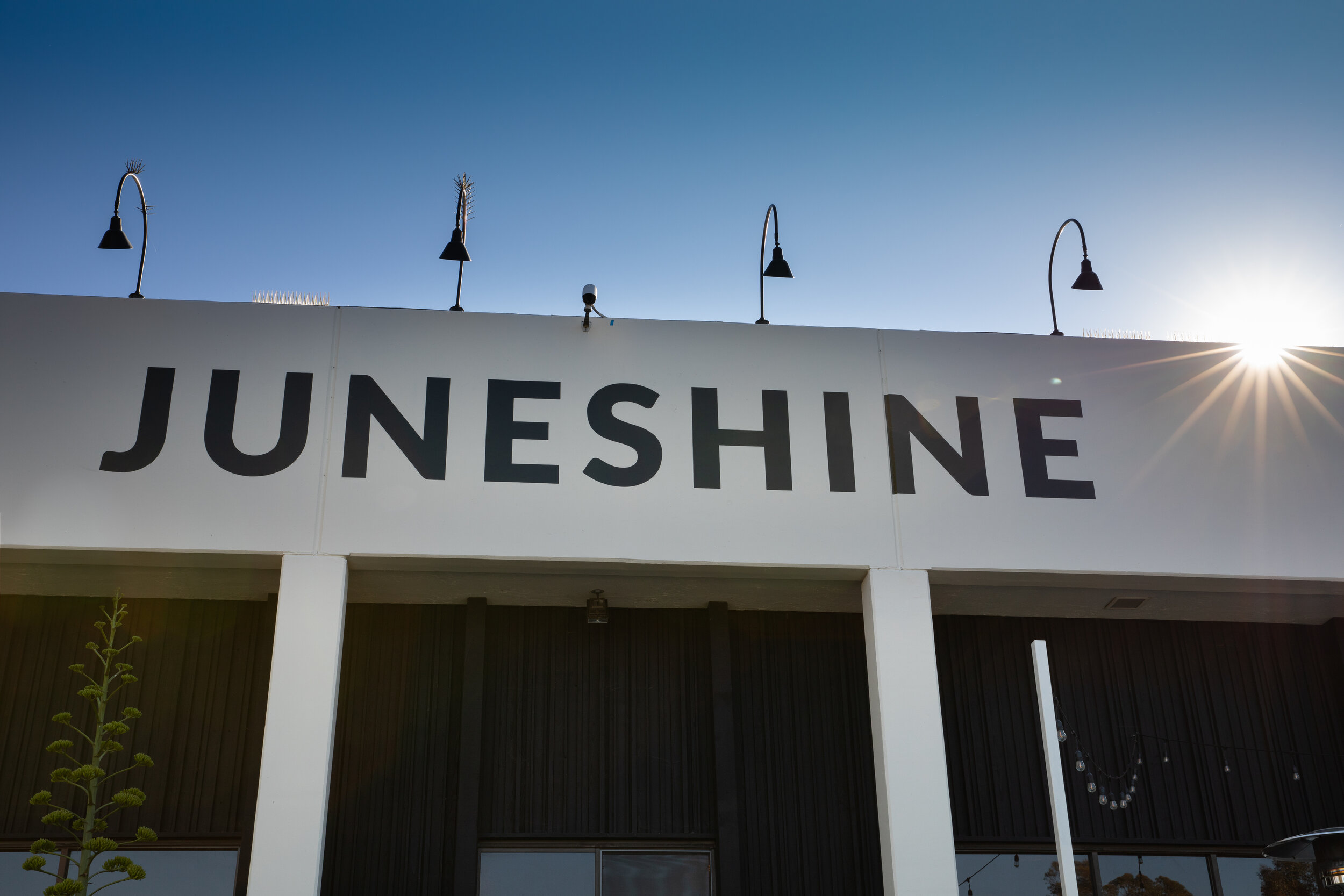
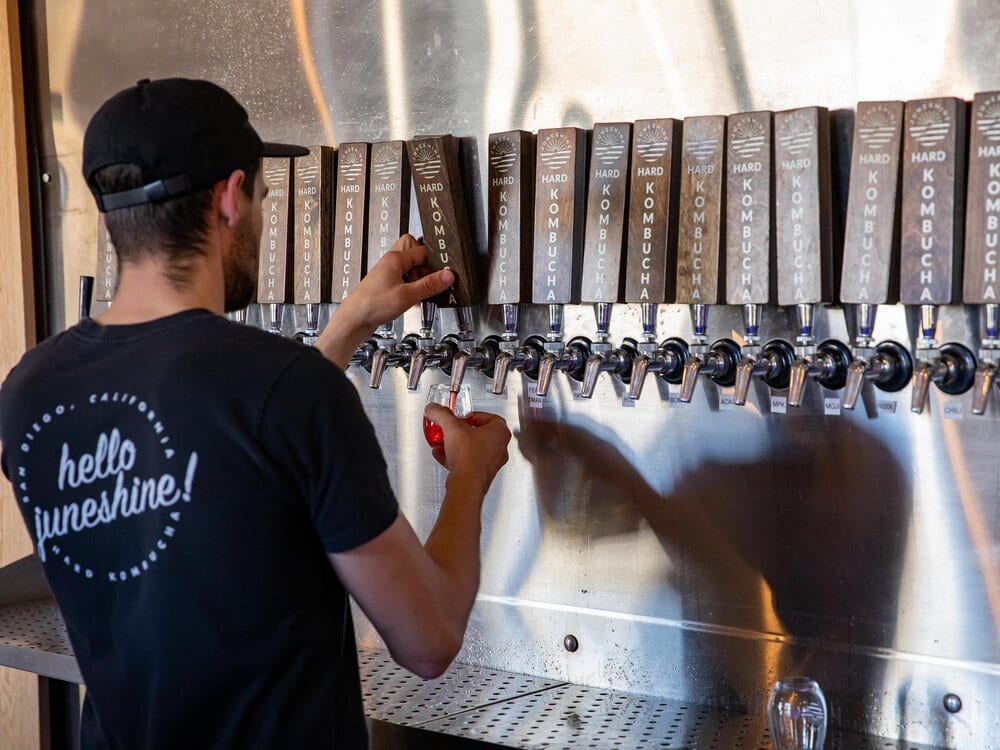
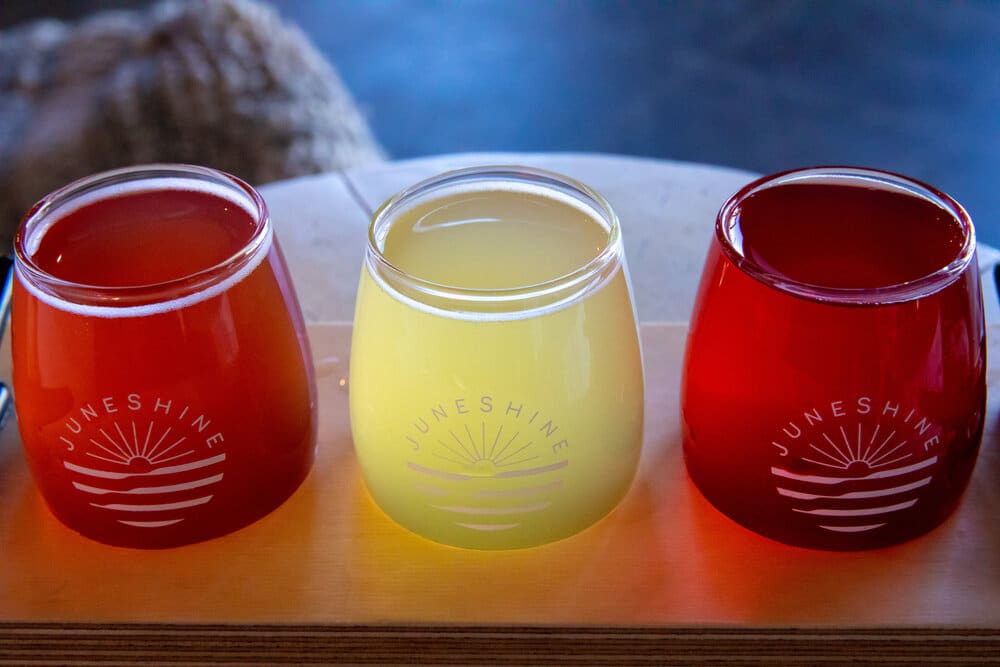
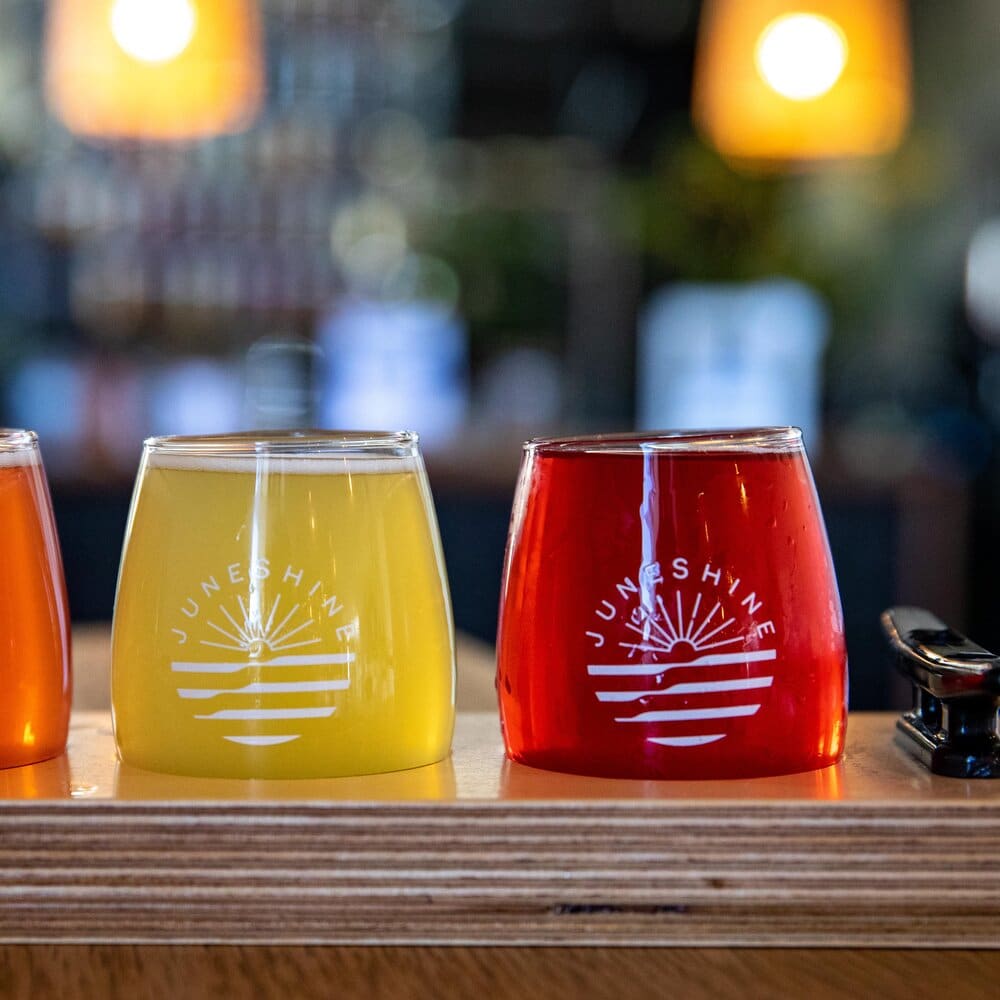
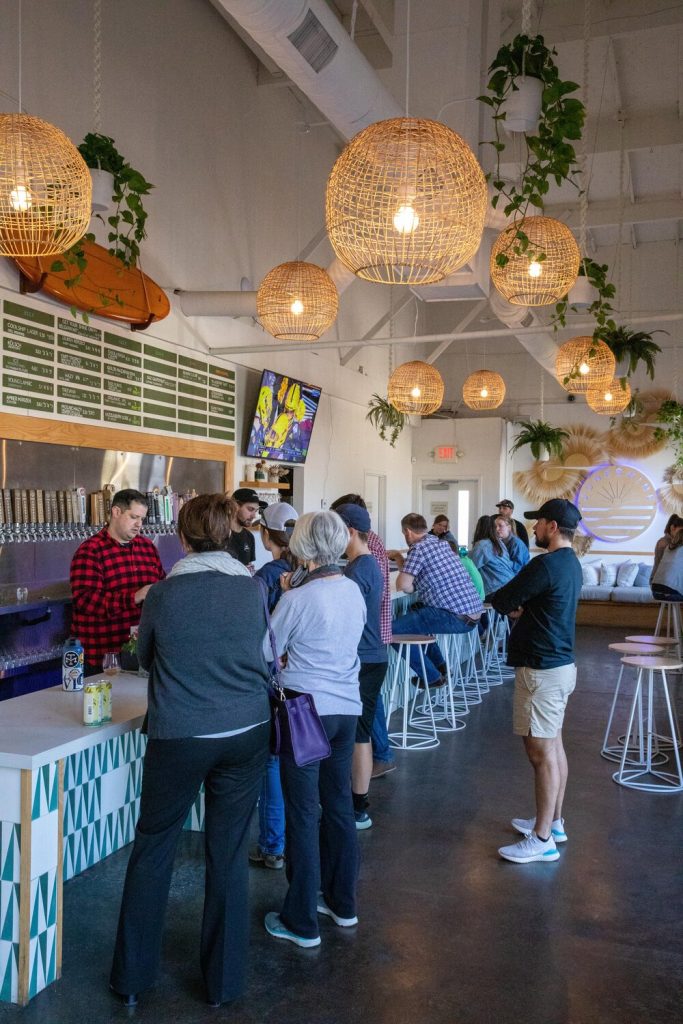
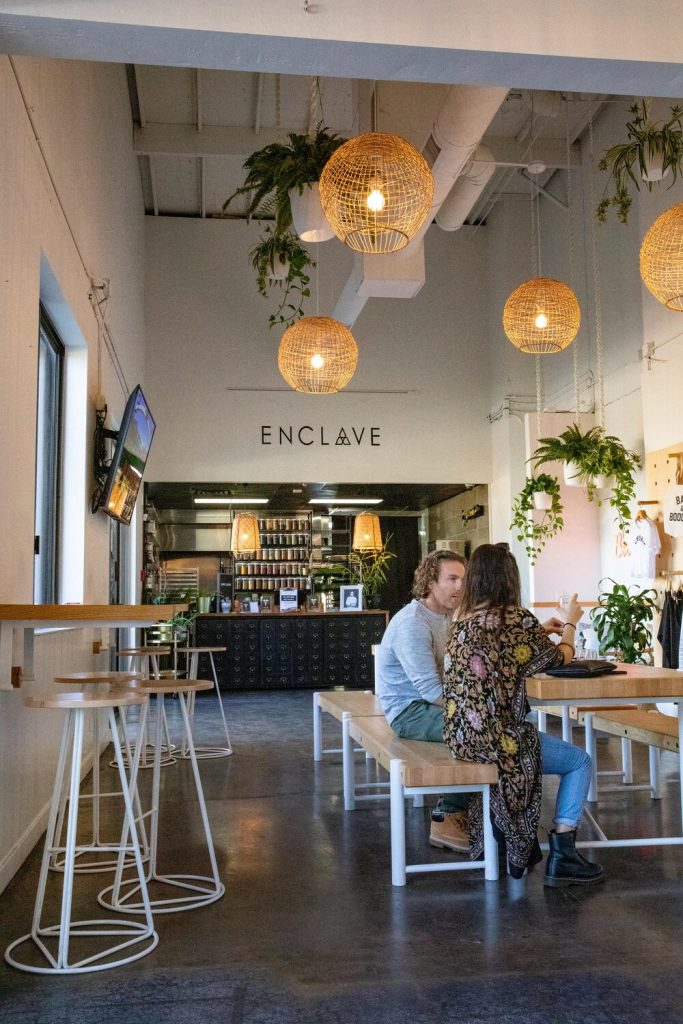

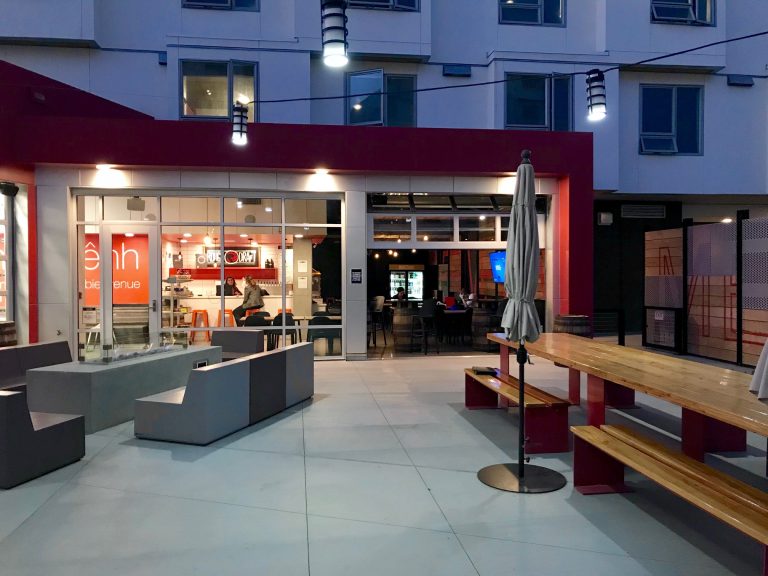

![Fourpenny House, La Mesa [CLOSED]](https://beermaverick.com/wp-content/uploads/2019/01/IMG_6204-768x768.jpg)
